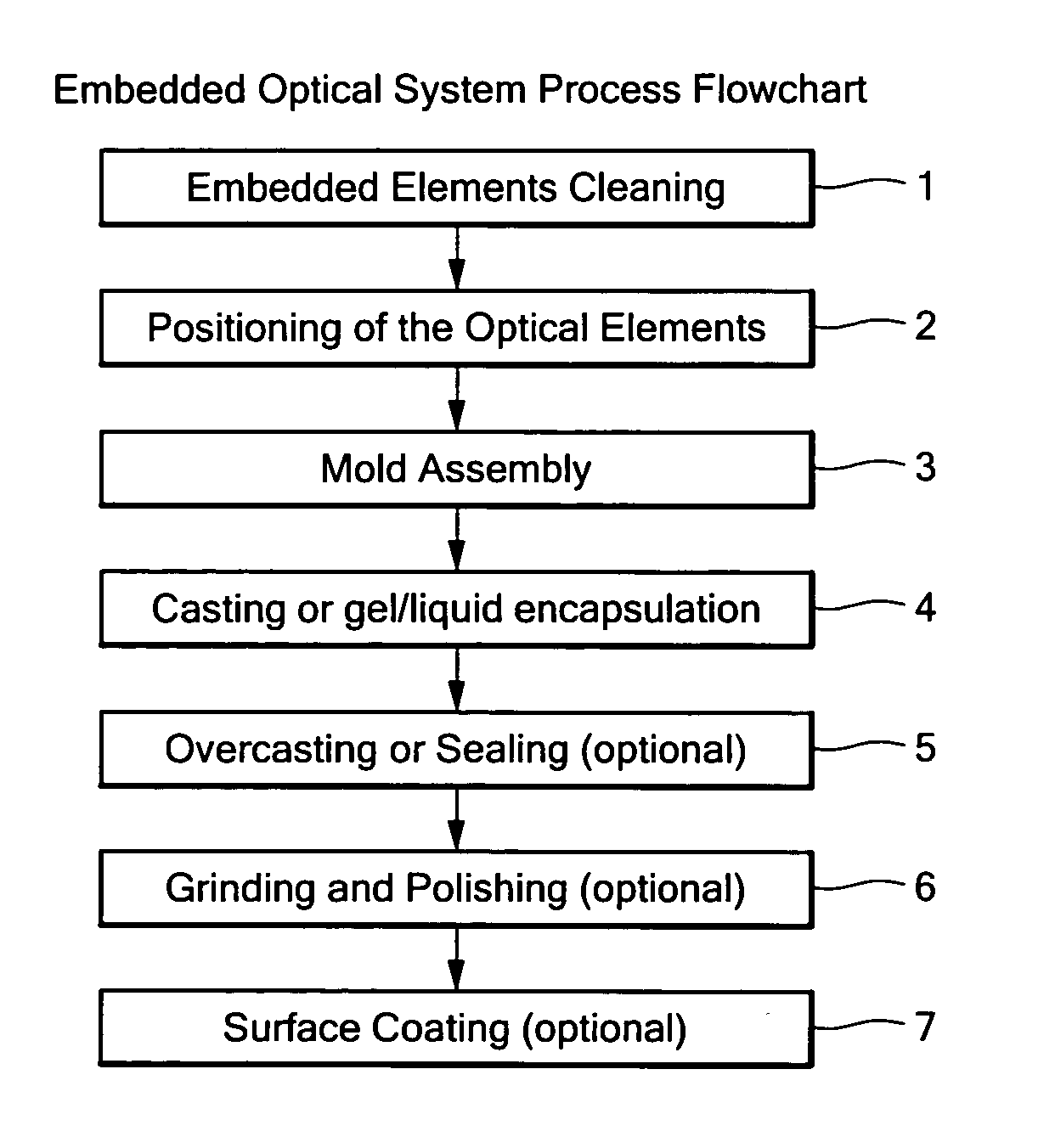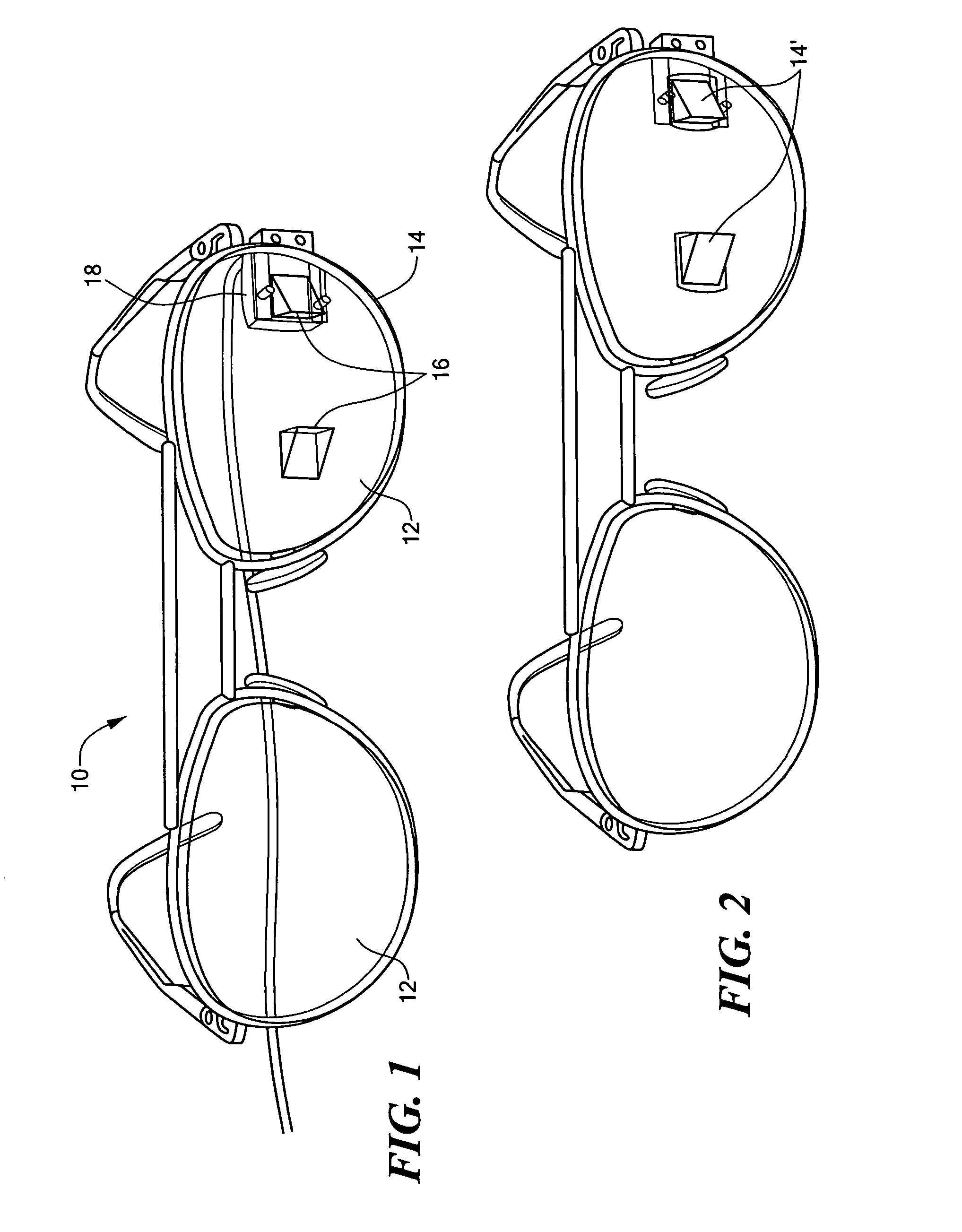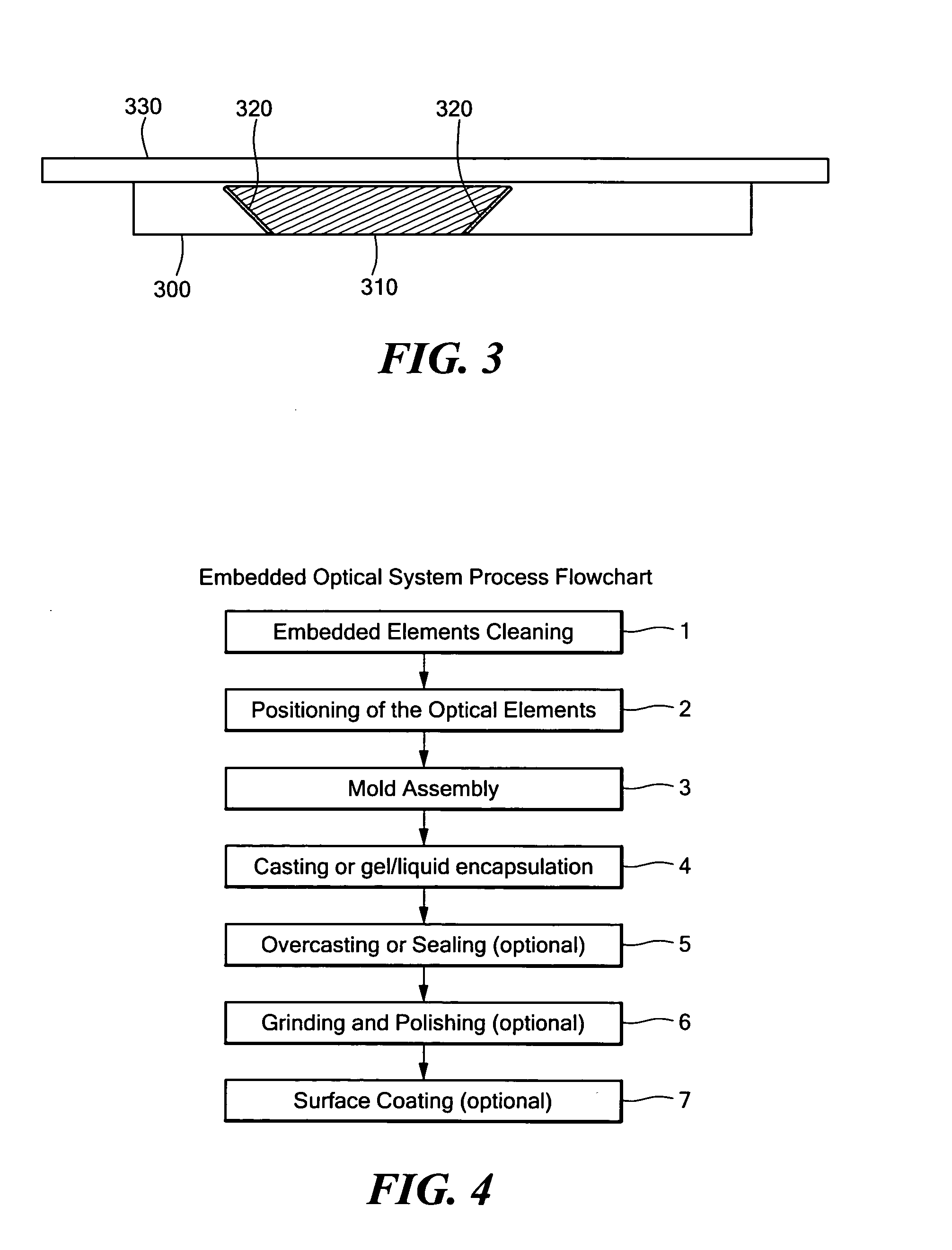Manufacturing methods for embedded optical system
a manufacturing method and optical system technology, applied in the field of manufacturing methods for embedded optical systems, can solve the problems of optical distortion, difficult actual manufacturing of embedded optical systems, and change the relative positions of embedded components
- Summary
- Abstract
- Description
- Claims
- Application Information
AI Technical Summary
Benefits of technology
Problems solved by technology
Method used
Image
Examples
Embodiment Construction
[0028]FIG. 1 illustrates a pair of eyeglasses 10 having two eyeglass lenses 12 retained within an eyeglass frame 14. In one lens, optical elements or components 16 are embedded to receive an image from a display 18 and transmit the image to the wearer's eye. FIG. 1 illustrates a see-through system, in which the wearer can also view the ambient scene through the optical elements. FIG. 2 is similar to FIG. 1, but illustrates a see-around system in which the embedded optical elements 14′ block a portion of the light from the ambient scene and the ambient scene is viewed around the optical elements. The optical elements, which may be, for example, lenses, mirrors, beam splitters and polarizers, are formed separately in any manner known in the art. The elements are then embedded in the lens as described further below.
[0029] To avoid contamination on the embedded optical parts it may be necessary to clean the optical elements to be embedded prior to the embedding process. See step 1 in F...
PUM
| Property | Measurement | Unit |
|---|---|---|
| Shrinkage | aaaaa | aaaaa |
| Shrinkage | aaaaa | aaaaa |
| Shrinkage | aaaaa | aaaaa |
Abstract
Description
Claims
Application Information
 Login to View More
Login to View More - R&D
- Intellectual Property
- Life Sciences
- Materials
- Tech Scout
- Unparalleled Data Quality
- Higher Quality Content
- 60% Fewer Hallucinations
Browse by: Latest US Patents, China's latest patents, Technical Efficacy Thesaurus, Application Domain, Technology Topic, Popular Technical Reports.
© 2025 PatSnap. All rights reserved.Legal|Privacy policy|Modern Slavery Act Transparency Statement|Sitemap|About US| Contact US: help@patsnap.com



